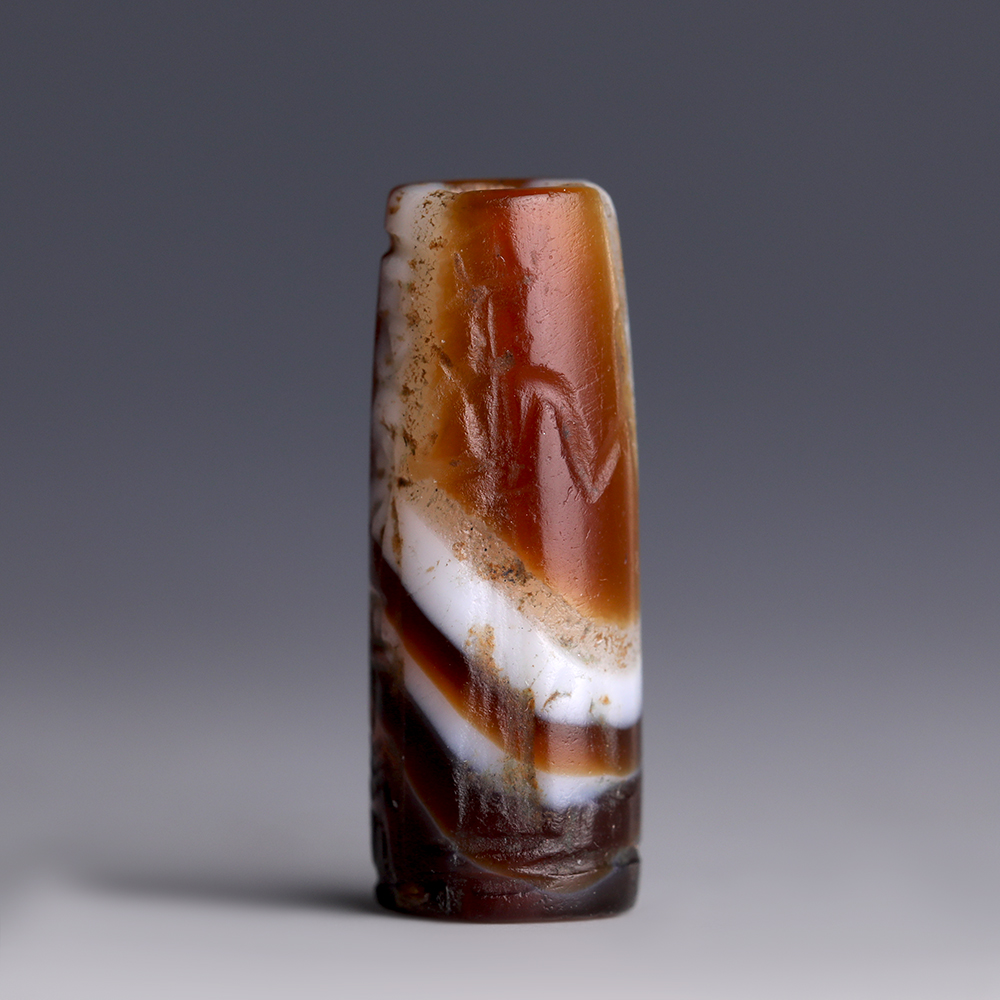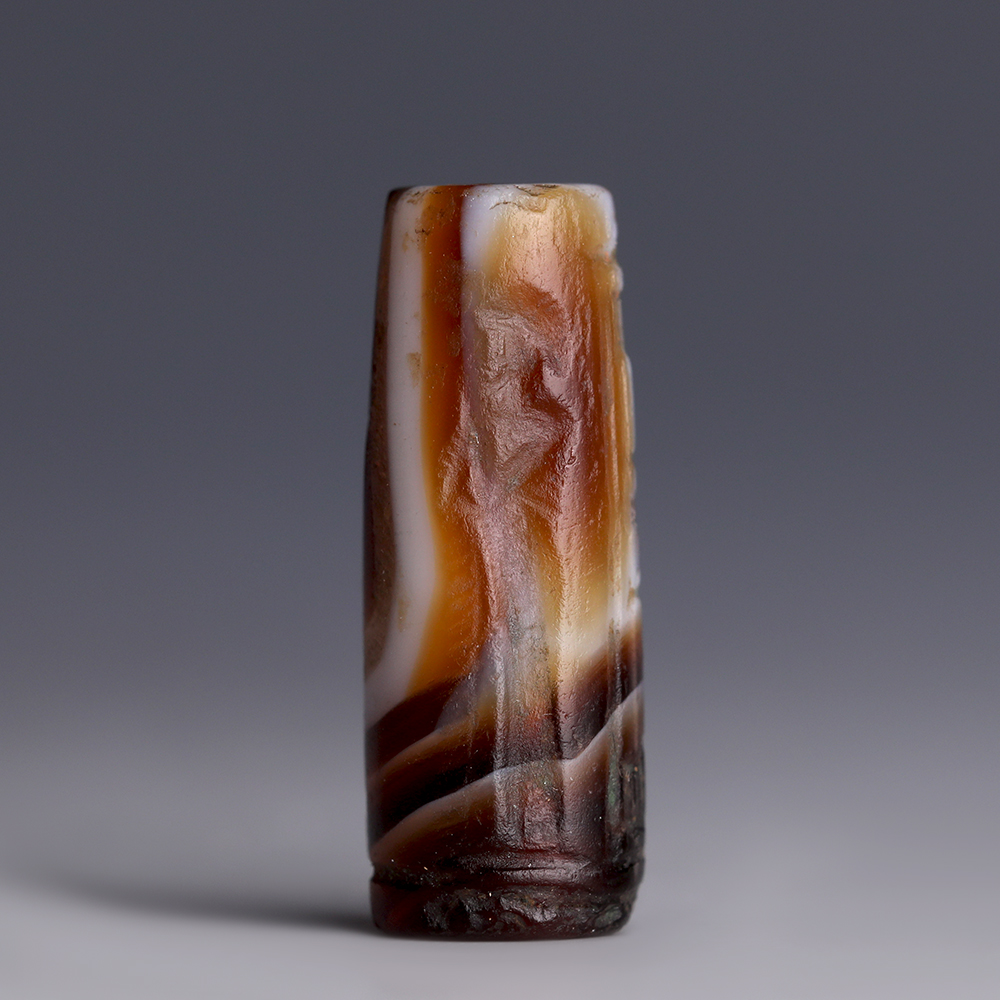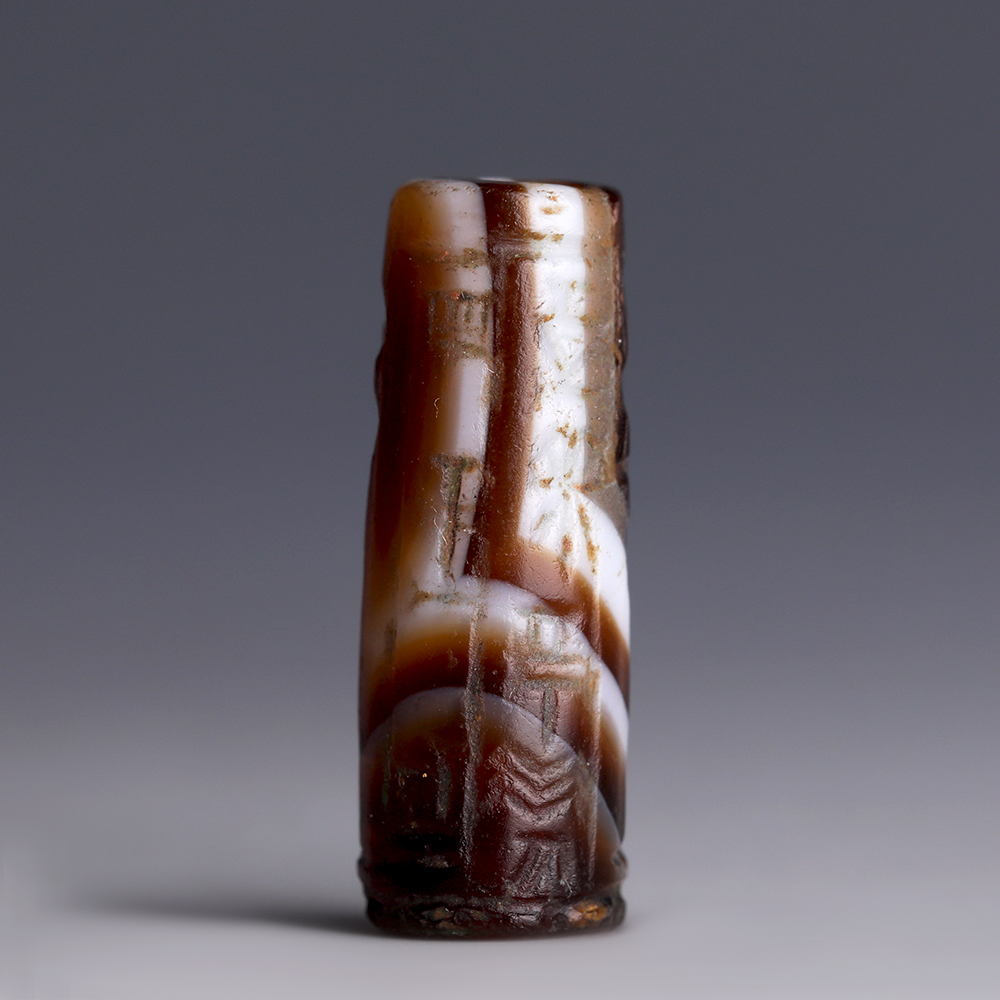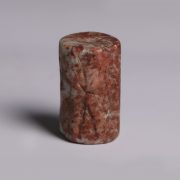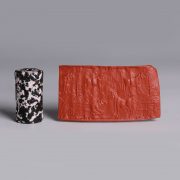Mesopotamia has been regarded as the cradle of ancient glyphic arts with the earliest cylinder seal proven to be first executed in Bronze Age Mesopotamia. The earliest cylinder seals can be dated as early as the fourth millennium BC. Since the fashion of engraving naturalistic images on precious and semi-precious stones began (Circa 3500 BC), each historical period contributed different significant aesthetic styles and technical developments to revive Mesopotamian glyptic arts. In the ancient world, seals guaranteed the authenticity of marked ownership – as such, they were instrumental in legal transactions, and in the protection of goods against theft.
Babylonian Agate Cylinder Seal with Ceremonial Scene
$1,554.94
A finely engraved Babylonian cylinder seal featuring a horizontal frieze depicting a ceremonial scene, accompanied by a two-columned inscription panel. Modelled from agate, the seal displays the natural white and light brown striations of the stone, which run across the surface creating attractive decorative patterns. On one side, a robed priest-king, identifiable by his crested head-dress, raises his right arm in a salute gesture as he faces a god, likely the Sun-god Shamash. The deity is presented in an ascending position, with one foot on a mountain and grasping a crescent-shape weapon resembling a scimitar, Shamash’s iconic weapon. Behind him are two columns of cuneiform inscription, the second of which transliterates as: ‘ir3-AN-mar-du’, reading as ‘ir-Anmardu’ and translating as “the servant of Amurru”. The presence of the Mountain-god Amurru’s name adds a second possible interpretation to the divine figure shown on this seal. Usually appearing on Babylonian seals in an attitude resembling that of Shamash, Amurru emblems comprise a crescent-shaped standard and a gazelle, upon which he rests his raised leg. The animal occasionally appears highly stylised and reduced to a square, completing the god’s assimilation with Shamash. The seal is pierced longitudinally for suspension, suggesting that it might have been worn as an adornment by its owner.
Provenance: From an important Mayfair collection, 1970-1999; thence by descent.
Condition: Fine condition, with minor dents to the base.
SOLD
| Weight | 1.8 g |
|---|---|
| Dimensions | L 0.7 x H 2 cm |
| Culture | |
| Region | |
| Semi-Precious Stones |
